Long division is easily the most challenging 4th grade math calculation your students will learn. It involves a complicated (sometimes confusing) algorithm and requires a strong fluency of basic facts for not just for division, but also multiplication, and subtraction, too. To master the steps requires a lot of practice, practice, more practice. This post will give you some of the wisdom I have learned for teaching long division for almost 30 years.

I usually allot 3 weeks or more to cover long division. Even more time might be required if my students are not fluent with their basic facts. My first tip is to come into teaching this skill with a positive mindset. Your students will mirror this mindset, whether that is persistence (“We can do hard things!”) or frustration (“Ugh. You keep making the same mistake!”), excitement (“You are going to love learning long division!”) or pessimism (“I always hated long division, but we are required to learn it”)
It is important to quickly recognize that there are several different methods for doing long division. I have taught them all at some point and each has their pros and cons. This post is a deep dive into how I teach the OG algorithm of long division – the standard method. This is the way of doing long division that your grandparents and great grandparents probably learned in school. If you are interested, I have a couple posts about the partial quotient and box method, too. It is a topic for debate whether the standard method is “best”, but it is probably the fastest, most efficient, and definitely the most popular method, at least in the U.S.
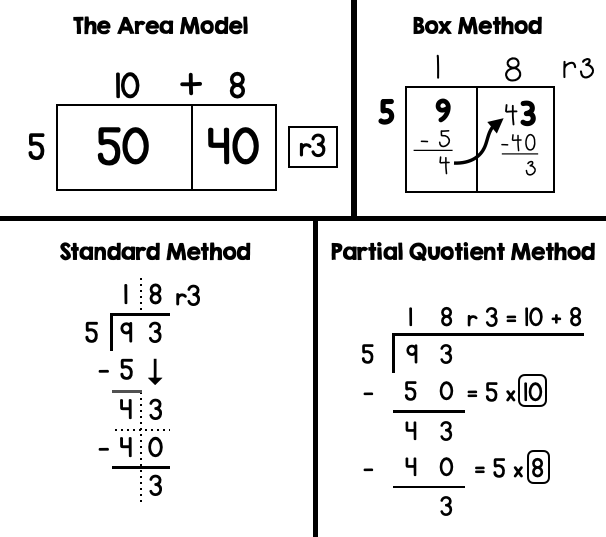

When teaching long division, I always begin by teaching students the vocabulary for each number of the problem. This gives us a language that helps us communicate as we practice each day. I also teach students some oddities about long division such as the fact that when written to solve, it is read from right to left, which is odd in math. For example lot of kids will try to read the problem below as 5 divided by 93 rather than 93 divided by 5. Another weird thing is the lines you draw around the divisor. It has a name, the vinculum, but I just call them the “division bar.”
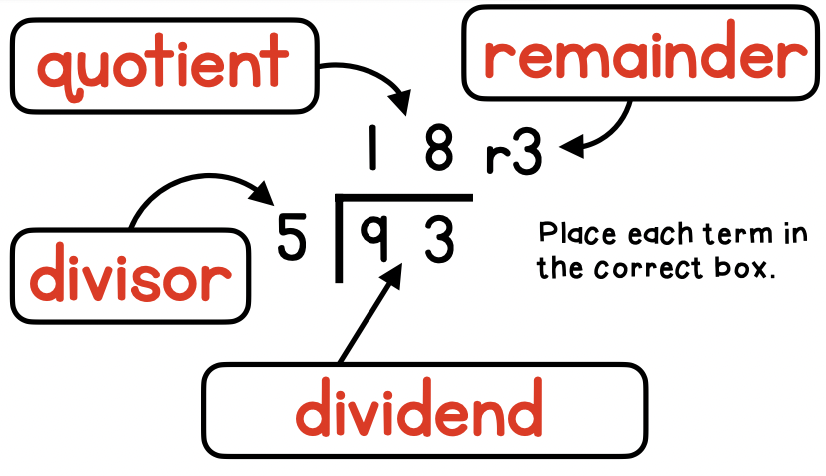

In their early learning, students benefit from cues to remind them of the steps that they need to follow to learn the standard method for long division. On day 2 or 3, I also teach students the Mnemonic: Does McDonals Sell Cheese Burgers Raw to teach the steps of: Divide, Multiply, Subtract, Check (or compare), Repeat (or Remainder). Any time we start a new division worksheet, I have the kids recite the mnemonic (Does McDonalds Sell Cheese Burgers Raw?) and then we write the first letters somewhere on their paper.
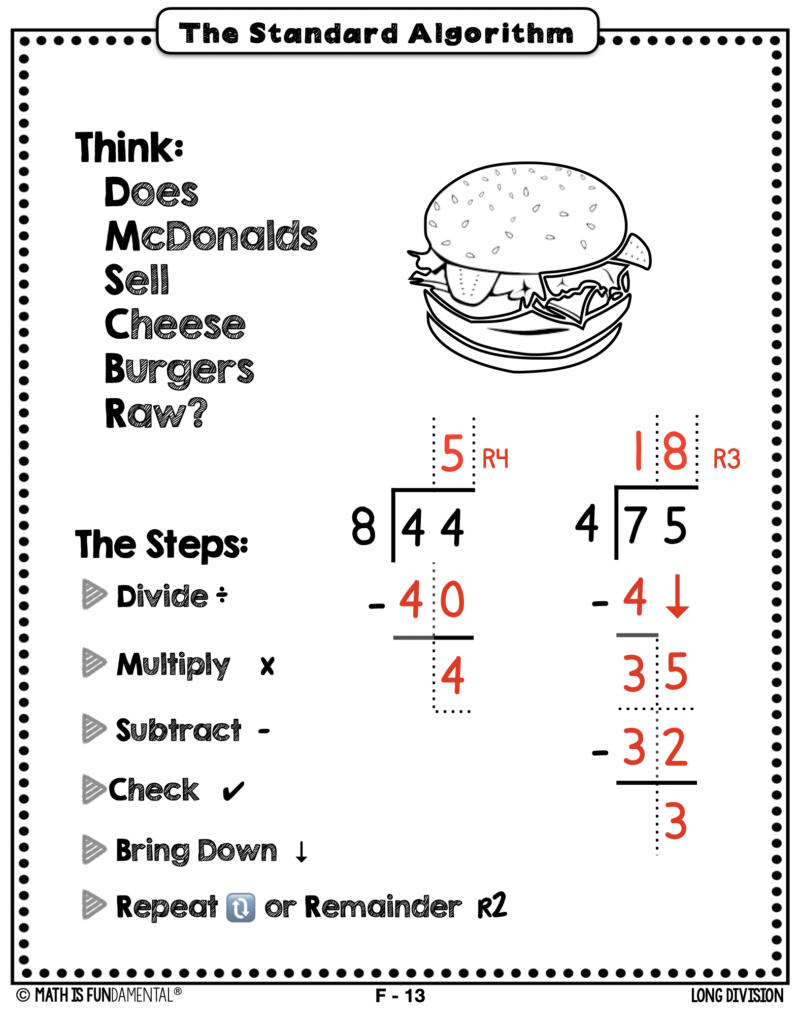
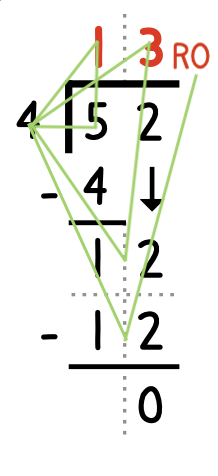

When I am teaching long division, I start very slowly and then pick up pace as students start to learn the steps. My rule of thumb is do examples together until you think they’ve all got it, and then do 2 more! Students have a way of fooling you into asking to work independently before they are ready. Trust me on this one. Nothing is worse than asking, “Everyone got it?” and seeing 28 nodding heads soon followed a stream of students lined up saying, “I’m confused” as they work independently. I tell my students, that I don’t push my baby birds out of the nest until they are strong enough to fly.

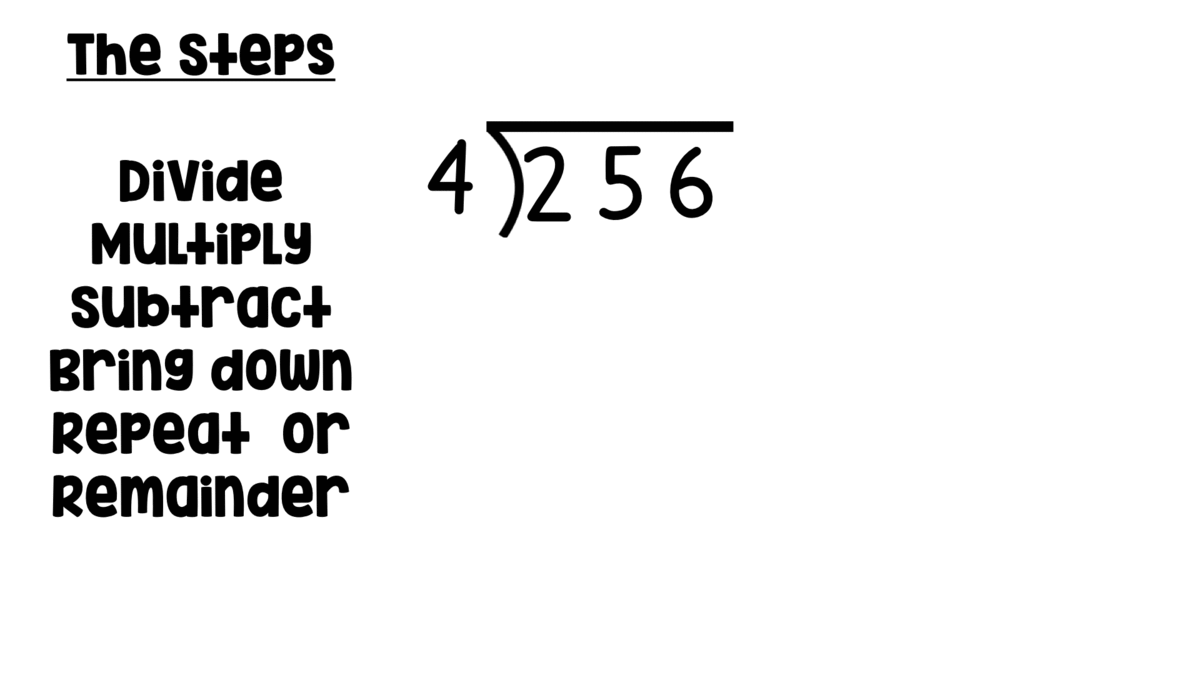
When I am teaching this concept at the board, I like to use a repetitive call and response method to teach the steps. This allows the students to shout out the answer, but only when I ask for it. The process for this problem might sound something like this:
Teacher: The first step is to DIVIDE. We ask, can 4 fit into 2? (Teacher underlines the 2.)
Students: No!
T: Good. That’s right. 4 is bigger than two so we must include the next digit. Can 4 fit into 25? (Teacher underlines 25)
Students: Yes!
T: Right. Let’s see… How many times can 4 fit into 25? (To give students time to think, teacher may show possible thinking by skip counting by 6s or saying “I know 6 times 3 is 18, and 6 times 4 is 24, but could I do 5 groups of 6? No, that is too many.) How many times?
Students: 4!
T: Right. When we divide, our answer goes on top. Where does the answer go when we divide?
S: On top!
T: Our first step was to divide. The next step is to MULTIPLY. What is 6 x 4?
S: 24!
T: Correct. Let’s put it below. Now, we divided, then we multiplied, what’s the next step?
S: Subtract!
T: Exactly. Let’s subtract 25 -24. That’s easy. What’s the answer?
S: 1!
T: Correct. The next step is important. It is the CHECK step. What are we checking exactly? (T raises hand to indicate calling on a student)
S: We check that the answer after subtracting is less than the divisor.
T: Exactly. What does it mean if the difference is greater than the divisor? (T raises hand again)
S: It means that we could have made another group.
T: That’s right. (T may want to model making too few groups and how this check works) The next step then is to bring down the 6. Now 1 becomes 16. We divided, multiplied subtracted, checked and brought down, the next step is to restart the process so we divide again. We ask, how many times can 4 fit into 16?
S: 4!
T: That’s right! When we divide, we put our answer up top. Where do we write it? (Note: this is a common confusing step for kids)
S: Up top!
T: Great. Now let’s MULTIPLY. What is 4 x 4?
S: 16!
T: Super! Almost done. It’s time to subtract 16 -16. What is our answer?
S: 0!
T: Right. Do we have any more digits we can bring down?
S: No!
T: Then the difference is our remainder. Our answer is 64 remainder 0. We write it as 64 R 0 or just 64.

For students new to long division, my recommendation is to begin with the scaffolded pages from this packet. It includes arrows and boxes to guide students through each step and to help them keep their work neat. It is by far my most popular product in my store. Don’t just take my word for it:

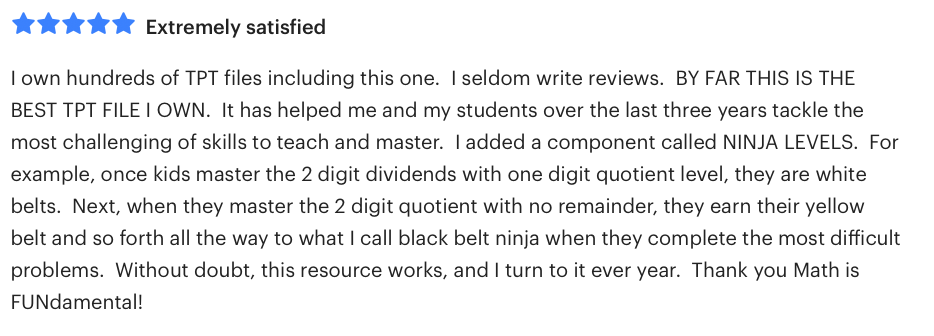
Using this product, I introduce one skill level each day. (For example, a skill level would be 3 digit dividends with 2 quotients with remainders).
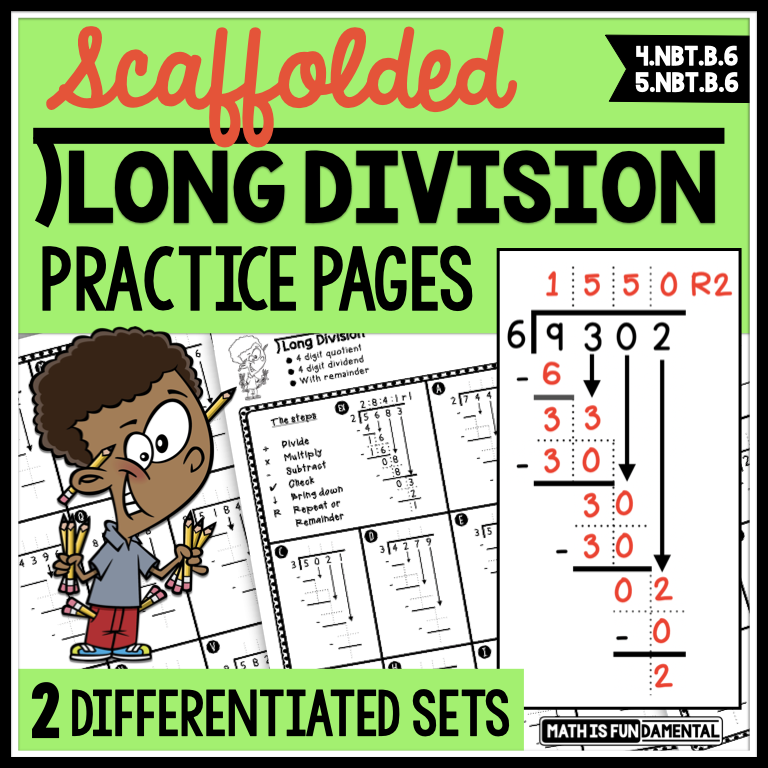
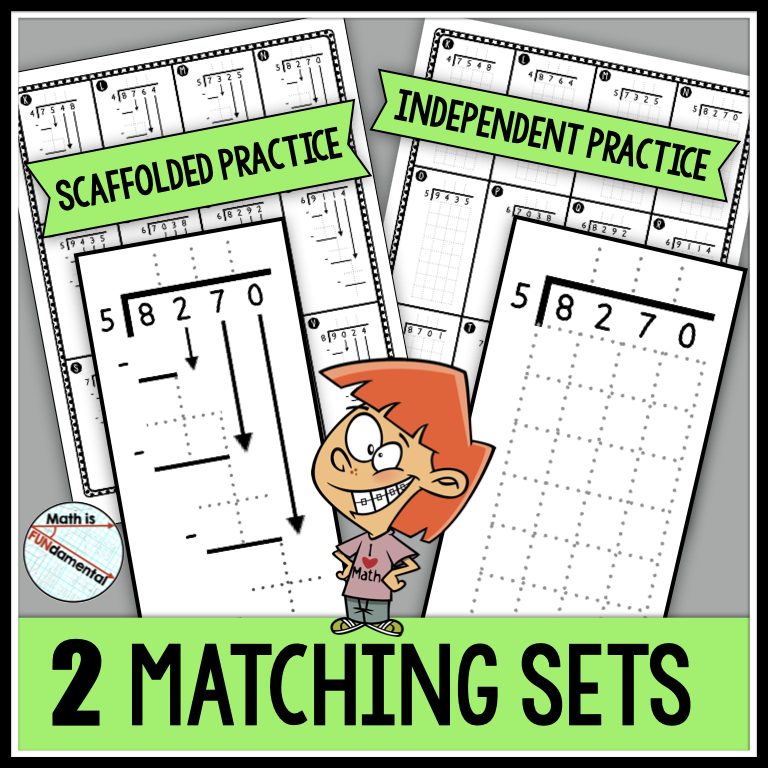
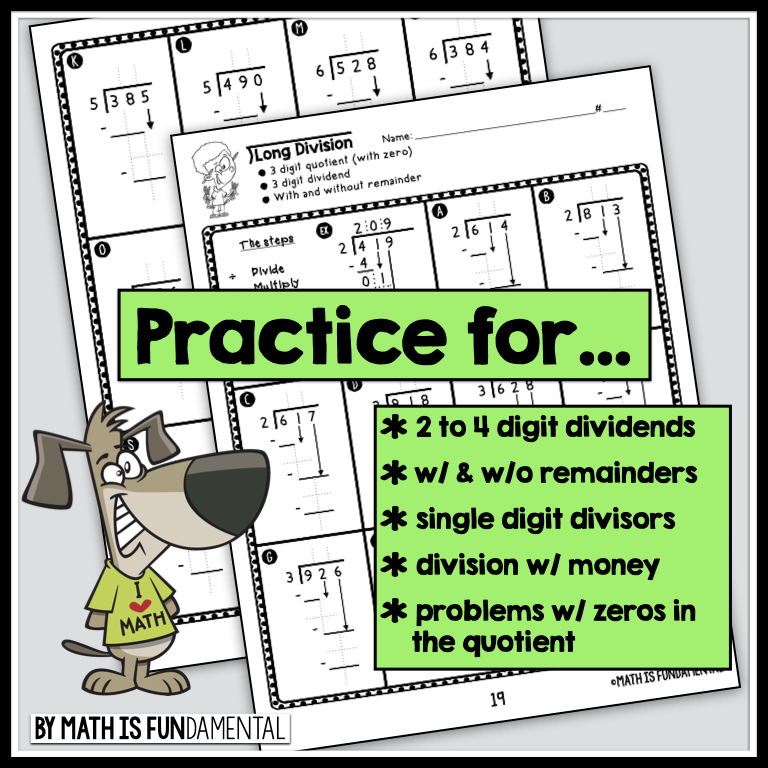

Eventually as students gain confidence and skill, they complete independent practice for that skill as classwork or homework. I have a lot of different options for this. My newest favorite is to use Boom cards. These are great because they are self-grading and students get immediate feedback on how they are doing, including the exact steps where they made a mistake. This product also has a fact chart which can be revealed for students who may not know all of their facts. This is awesome for differentiation. Here’s this product in action:
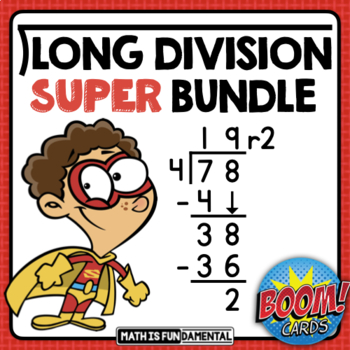
Another new favorite of mine are these coded joke practice pages. Like the Boom cards, these are simple to check at a quick glance and the kids love the fun of solving the jokes in these puzzles.
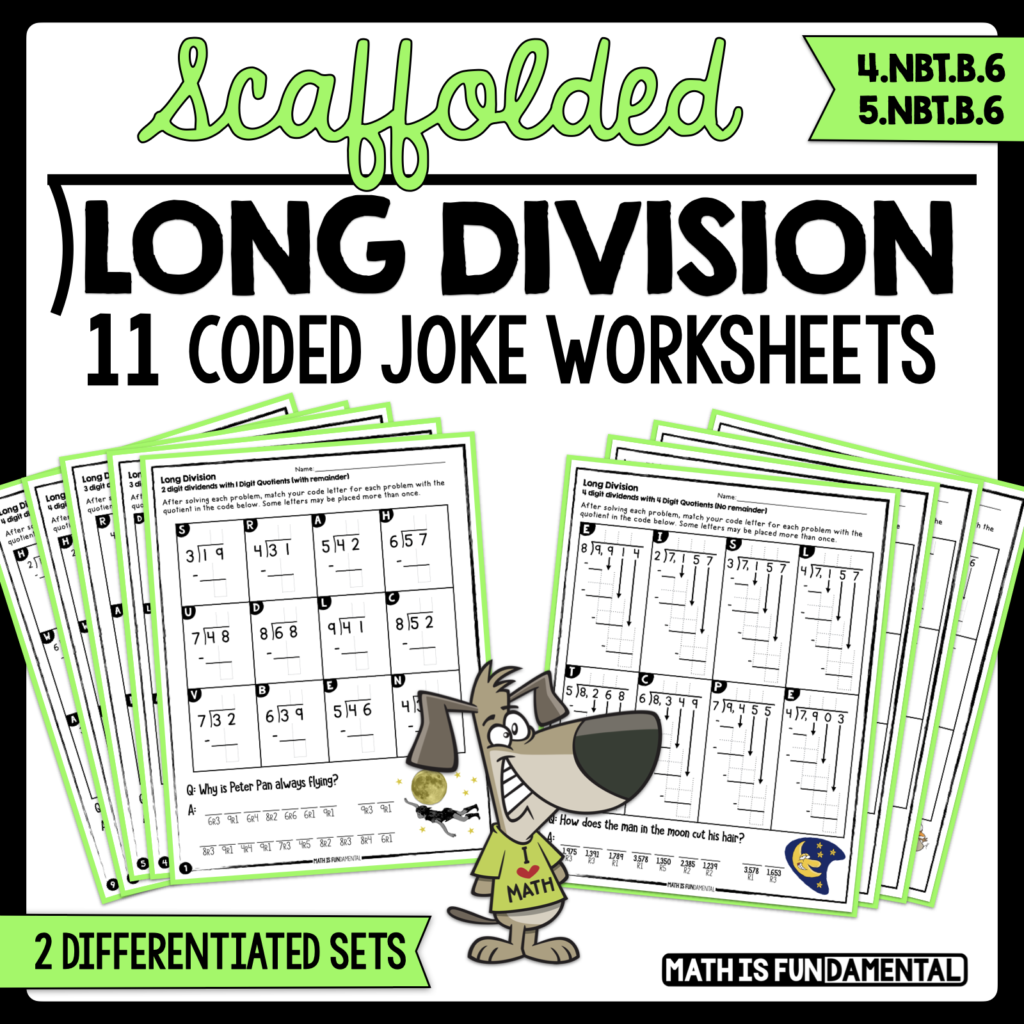
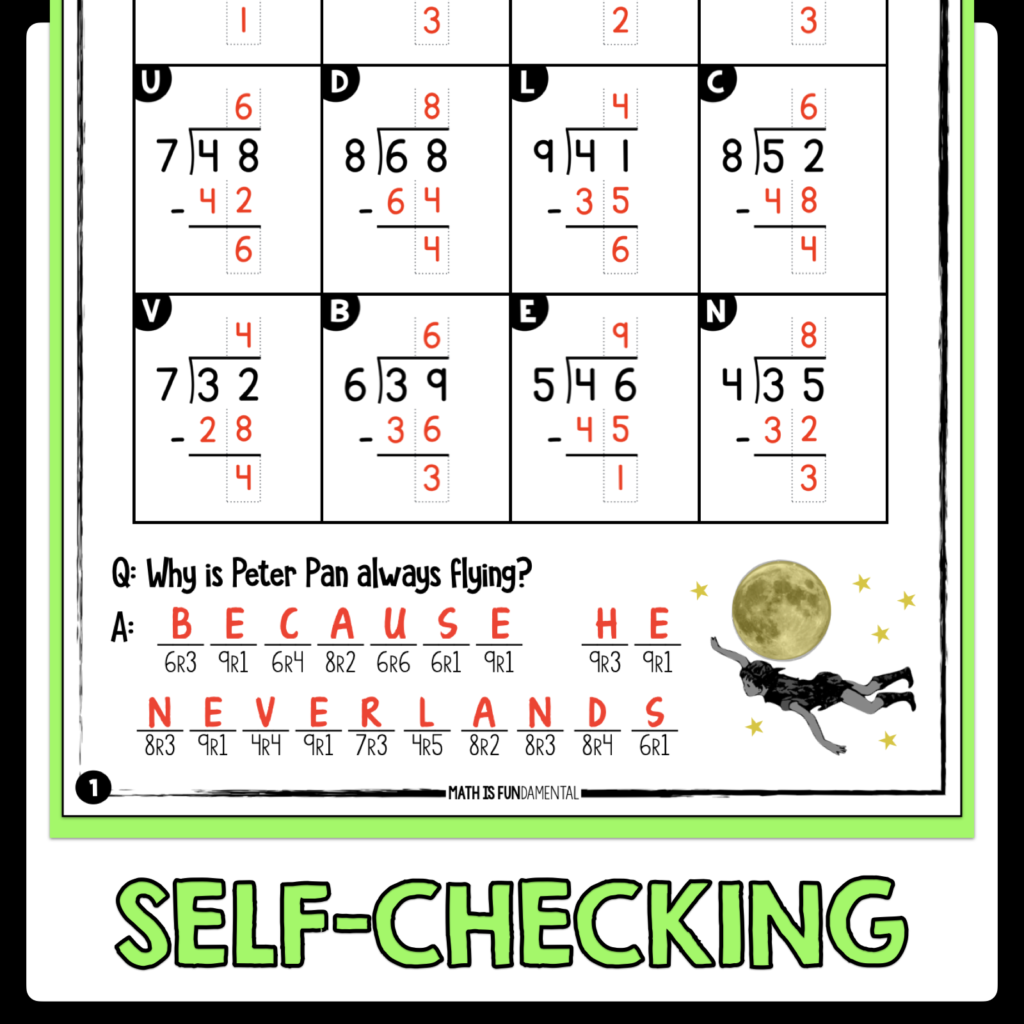
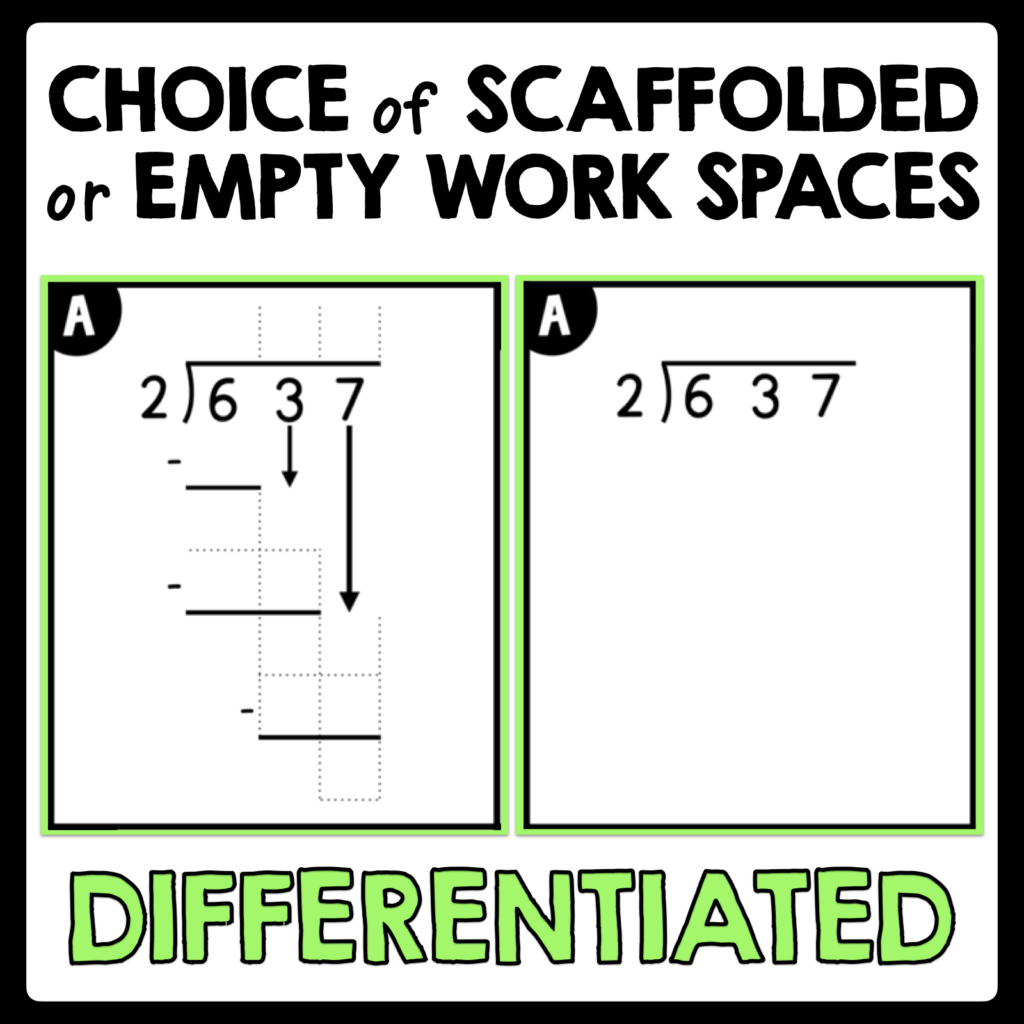

As students gain confidence, slowly transition them to the independent practice pages. When some baby birds are ready to fly, I let students choose when they are ready to try these pages. This gives them a sense of agency with their learning, and that is a powerful tool to motivate student learning. I leave grids to help guide students in keeping their work organized.
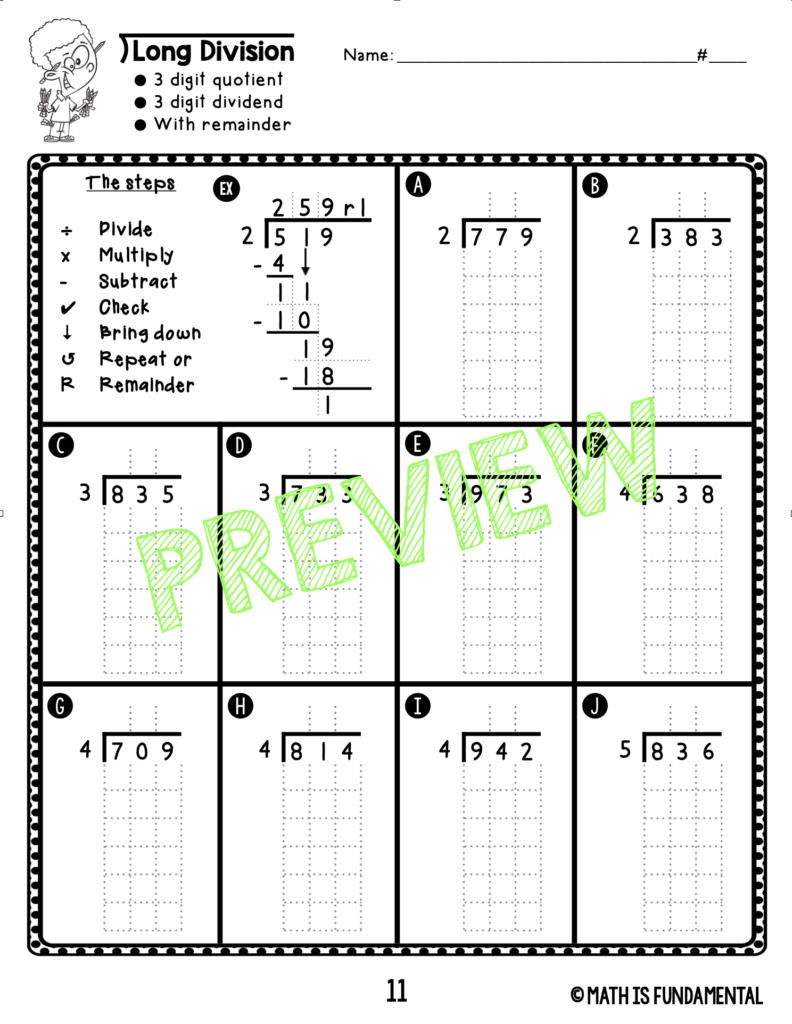

Learning (and teaching) long division can get tedious if you don’t break it up, so it is important to find a way to keep it fresh for you and your students. For example, at the start of each Math class I almost always play a Kahoot game to review what we learned the previous day.

I have also created self checking QR code task cards, fact practice Boom desk as well as traditional task card sets that allow students to practice while they self-check. Students enjoy this, and I appreciate the fact that because they can self-check, I am freed up to help the students who most need it.

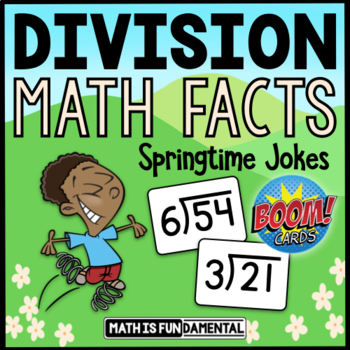
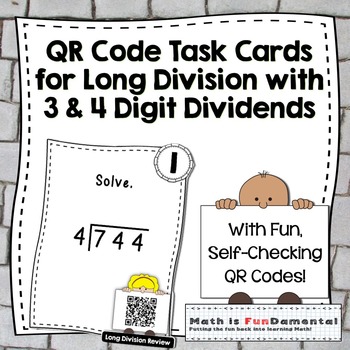

There’s nothing more important than answering the age old question, “Why do I need to know this?” Problem Based Learning (PBL) experiences and solving word problems that use long division, both help students connect the math they are doing with real world situation. Here are some products I have for teaching this concept.
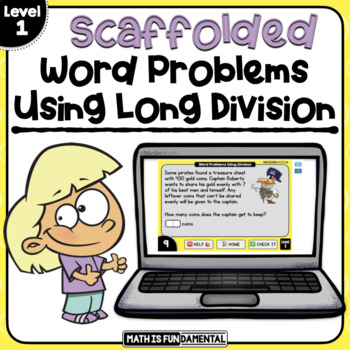
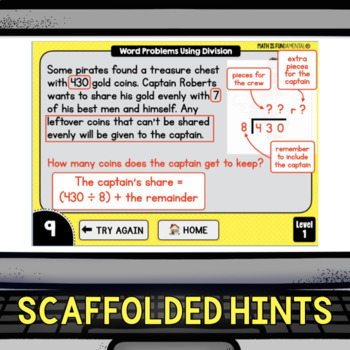
There you have it! Nearly 30 years of experience of teaching long division boiled down to 10 teaching tips. I hope you find these helpful. If so, please reach out to me and let me know in the comments.




This is my first year in 4th grade and teaching division. So when I saw the next topic on our curriculum framework was division, the panic set in. But this is such a helpful resource, I feel much better prepared to scaffold and build my students knowledge of division!
That is great to hear. Each year you teach long division, it will get a little easier. Thanks for taking the time to comment.
-Shane